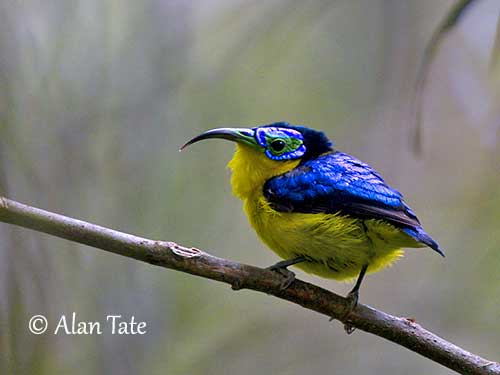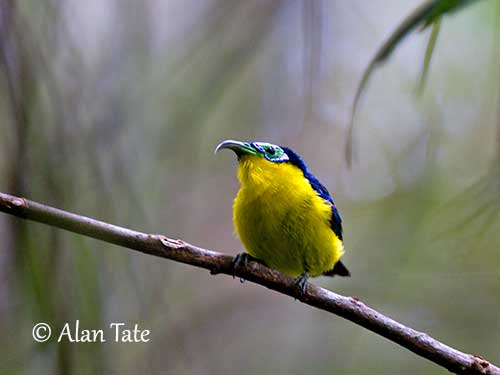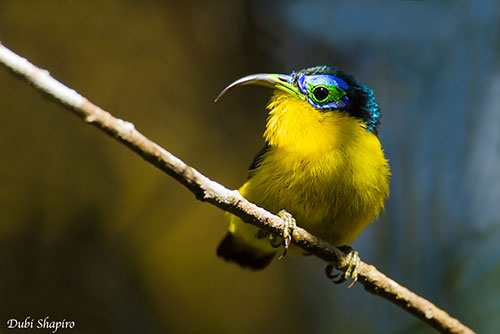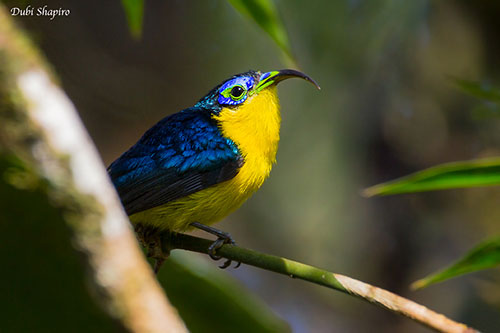
Fr: Philépitte de Salomonsen
Ang: Yellow-bellied Sunbird-Asity
All: Kurzschnabel-Nektarjala
Esp: Filepita-suimanga Ventrigualda
Ita: Asity panciagialla
Nd: Kortsnavelhoningasitie
Sd: gulbukig asit
Mal: fodimena
Photographers:
Dubi Shapiro
Dubi Shapiro Photo Galleries & Dubi Shapiro's Pictures on IBC
Alan & Ann Tate
AA Bird Photography
Text by Nicole Bouglouan
Sources :
HANDBOOK OF THE BIRDS OF THE WORLD Vol 8 By Josep del Hoyo-Andrew Elliott-David Christie - Lynx Edicions - ISBN: 8487334504
Birds of Madagascar and the Indian Ocean Islands Par Roger Safford, Adrian Skerrett, Frank Hawkins – ISBN: 1472924118, 9781472924117- Editeur: Bloomsbury Publishing, 2015
The Birds of Africa: Volume VIII: The Malagasy Region: Madagascar, Seychelles, Comoros, Mascarenes - Par Roger Safford, Frank Hawkins – ISBN: 1408190494, 9781408190494- Editeur: A&C Black, 2013
Birds of Madagascar: A Photographic Guide Par Pete Morris, Frank Hawkins – ISBN: 0300077556, 9780300077551- Editeur: Yale University Press, 1998
Birds of the Indian Ocean Islands Par Ian Sinclair, Olivier Langrand - ISBN: 1868729567, 9781868729562- Editeur: Struik, 2003
Wikipedia, the free encyclopaedia
Animal Diversity Web (University of Michigan Museum of Zoology) (Philepittidae)
CREAGUS@Monterey Bay (Don Roberson) (Philepittidae)
Yellow-bellied Sunbird-Asity
Neodrepanis hypoxantha
Passeriformes Order – Eurylaimidae Family
INTRODUCTION:
The Yellow-bellied Sunbird-Asity is endemic to Madagascar. The Neodrepanis sunbird-asities are fairly similar to the sunbirds, and they were placed in the family Nectariniidae until 1951. Although sharing the extravagantly decurved bill shape with the Hawaiian honeycreepers Drepanis, it does not indicate any taxonomic relationship between these groups.
The conspicuous wattles or caruncles of the male are more prominent during the breeding season, and are usually enlarged during the displays. The female is much duller and lacks these ornaments. They feed primarily on nectar from flowers, but they also take some insects.
The Yellow-bellied Sunbird-Asity frequents mossy, humid montane forest and evergreen woodland with shrubby vegetation. These forested areas are highly fragmented and vulnerable to fire. For these reasons, the population is declining and the species is currently listed as Vulnerable.

DESCRIPTION OF THE BIRD:
Biometrics:
Length: 9-10 cm
The Yellow-bellied Sunbird-Asity adult male in breeding plumage has iridescent blue-black upperparts including crown, neck, mantle, scapulars, wing-coverts, tertials and rump. Tail and flight feathers are mostly black.
The underparts are bright yellow, but underwing-coverts and axillaries are pale yellow with dark bases.
The head shows complex, brightly-coloured pattern. There is a large caruncle or wattle around the eye. The centre, close to the eye, is lime-green whereas the colour becomes cobalt-blue around the edge. The wattle extends forwards almost to the bill.
The long, strongly decurved bill is black with fine tip. The base of the upper mandible is blue above the nostrils, and surrounded by pale green band. The base of the lower mandible is pale green. The eyes are dark brown. Legs and feet are brownish-black.
The non-breeding male lacks the caruncles and the bright colours at bill base. It has dull olive green top and head sides, mantle and upper scapulars.
The adult female lacks the caruncles. Crown and upperparts are dull olive green. Cheeks and ear-coverts are yellowish olive green. The underparts are bright yellow. The dark grey-brown rectrices are edged olive green on the uppertail, and on the upperwing, the blackish-brown feathers also have olive green fringes. The bill is dull brownish-black.
The juvenile resembles female, but after the first moult, it has paler fringes on wing-coverts. Breast and belly are duller yellow than in adult female.
RANGE:
The Yellow-bellied Sunbird-Asity is patchily distributed along the rainforest belt of E Madagascar. It is usually restricted to the higher mountain areas.

The Yellow-bellied Sunbird-Asity is probably sedentary and only performs some altitudinal movements during the cold season from June to September, related to food availability. During this period, it may join mixed-species flocks.
This species is always very active and appears to be in constant motion.
REPRODUCTION OF THIS SPECIES:
The nesting period is observed between November and January. The female builds an ovoid hanging structure made with moss and pieces of leaves. It is placed in mid-storey, about 2/2,5 metres above the ground. The nest has an entrance “porch”.
The female lays 2 white eggs and probably incubates alone, as the male lacks the brood-patch. Fledged juveniles can be seen in mid-November and mid-December. Both parents feed the young.
PROTECTION / THREATS / STATUS:
The Yellow-bellied Sunbird-Asity has very restricted range and occurs in fragmented areas vulnerable to fire. However, this species is present in several protected parks and reserves.
The population is roughly estimated to number 15,000/30,000 individuals and is suspected to be declining.
The Yellow-bellied Sunbird-Asity is currently listed as Vulnerable.

HABITAT:
The Yellow-bellied Sunbird-Asity occurs in rainforest and can be seen on exposed ridges from 1,200 metres or on higher areas up to 1,400 metres of elevation to the treeline.
It favours areas with shrubby vegetation, and frequents both canopy and subcanopy of montane rainforest, locally up to 2,650 metres. However, it is usually more common between mid-elevation forest and moss forest.
CALLS AND SONGS: SOUNDS BY XENO-CANTO
The Yellow-bellied Sunbird-Asity utters single, loud, high-pitched “tip” note, usually repeated at short intervals. In flight, it produces a buzzing or wing-whirring, probably caused by the long, emarginated first primaries.
BEHAVIOUR IN THE WILD:
The Yellow-bellied Sunbird-Asity feeds on nectar and small invertebrates caught both in the air and from various surfaces.
The nectar is taken from a wide variety of pink, red and white flowers, both native and exotic, and especially from plants of genus Bakerella. These plants have long, recurved flowers well-adapted to the bill shape. However, some observations suggest that the bird does not insert the bill very far into the flower, but prefers to use its long tongue.
Insects are found by probing under bark and in bark crevices, or in hanging dead vegetation. It also eats the small insects visiting the flowers, and consumes small caterpillars and spiders.
The Yellow-bellied Sunbird-Asity is suspected to be polygynous. Thanks to observations, some displays have been described. The male flips around a perch, but the displays show first the male leaning well forwards on the perch while the throat feathers are fluffed. It turns the head in order to display the bright-coloured caruncles and upperparts. These displays are often directed towards other males or at intruders, including humans.
Other displays include wing-flapping, also a posture in which the male’s bill is lowered and touches the breast while the crown feathers are erected and the tail depressed.
These displays are accompanied by loud calls by the male, while the female touches the male’s back with her bill and slightly flutters her wings.
